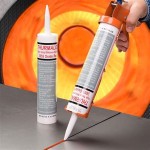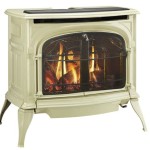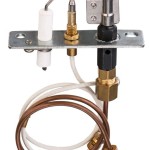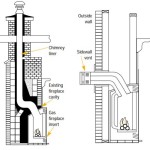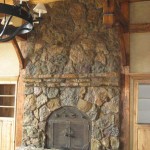Adding Stone Veneer to a Brick Fireplace: A Comprehensive Guide
The desire to update and personalize a home often leads to considering cosmetic enhancements. One prominent feature in many homes is the fireplace. While a brick fireplace offers a classic aesthetic, its appearance can become dated or clash with evolving interior design preferences. A popular solution for revitalizing a brick fireplace is the application of stone veneer. This process involves adhering thin layers of manufactured or natural stone to the existing brick surface, effectively creating a new, aesthetically pleasing facade. Stone veneer offers benefits such as a lighter weight compared to full stone, easier installation, and a generally lower cost, making it a viable option for homeowners seeking to transform their fireplace.
Before embarking on a stone veneer project, a thorough assessment of the existing brick fireplace is essential. This evaluation will identify any potential structural issues that need to be addressed before installation. Cracks, loose bricks, or water damage must be repaired to ensure a stable and durable foundation for the veneer. The type of brick used can also influence the choice of mortar and installation techniques. Porous bricks, for example, may require different preparation compared to dense, glazed bricks. Taking the time to properly prepare the surface is paramount, as it directly impacts the longevity and appearance of the finished project.
Key Point 1: Surface Preparation is Paramount
Successful stone veneer installation hinges on proper surface preparation. The existing brick must be clean, sound, and properly prepared to ensure a strong bond with the mortar. The first step involves thoroughly cleaning the brick surface to remove any dirt, dust, efflorescence, or loose debris. A wire brush or pressure washer can be used for this purpose. Stubborn stains or efflorescence may require specialized cleaning solutions designed for masonry.
Next, the brick surface often needs to be roughened to enhance the mortar's adhesion. This can be achieved by using a grinder with a coarse grinding wheel or by applying a bonding agent specifically designed for masonry applications. A bonding agent creates a textured surface and promotes chemical bonding between the brick and the mortar. The choice between grinding and using a bonding agent depends on the condition of the brick and the specific recommendations of the stone veneer manufacturer.
Finally, ensure the brick is perfectly level. While minor imperfections can be accommodated, significant unevenness can create problems during installation, leading to an aesthetically displeasing result. Leveling compound can be employed to rectify any major dips or inconsistencies in the brick surface before applying the stone veneer.
Key Point 2: Selecting the Right Stone Veneer and Mortar
Choosing the appropriate stone veneer and mortar is critical to achieving the desired aesthetic and ensuring the durability of the fireplace facade. Stone veneer comes in a wide variety of colors, textures, and profiles, ranging from natural-looking river rock to more contemporary stacked stone designs. The choice of stone should complement the overall style of the room and reflect the homeowner's personal preferences.
Both manufactured and natural stone veneer options are available. Manufactured stone veneer is made from concrete and pigments, offering consistent color and size, often at a lower cost than natural stone. Natural stone veneer, on the other hand, provides unique variations in color and texture, lending a more authentic and organic look. Each type has its own advantages and disadvantages in terms of cost, weight, and installation requirements.
The mortar used to adhere the stone veneer to the brick is equally important. A type S or N mortar, specifically formulated for stone veneer applications, is generally recommended. These mortars provide the necessary strength and flexibility to accommodate expansion and contraction caused by temperature fluctuations. Follow the manufacturer's instructions for mixing and applying the mortar, paying close attention to the water-to-mortar ratio to achieve the correct consistency.
Key Point 3: Proper Installation Techniques for Longevity
The installation process itself requires careful attention to detail to ensure a professional and lasting result. Start by laying out the stone veneer pieces on the floor to determine the desired pattern and arrangement. This allows for adjustments and ensures a balanced and aesthetically pleasing facade. Consider varying the sizes and shapes of the stones to create a more natural and random appearance.
Apply a layer of mortar to the back of each stone veneer piece, ensuring full coverage. Press the stone firmly against the prepared brick surface, using a slight twisting motion to create a strong bond. Maintain consistent spacing between the stones to allow for the mortar joints. The width of the mortar joints can vary depending on the desired look, but a typical range is between 1/2 inch and 1 inch.
Once the mortar has partially set, tool the joints to create a clean and uniform appearance. Several jointing styles are available, including flush joints, raked joints, and grapevine joints. The choice of jointing style can significantly impact the overall aesthetic of the fireplace. Allow the mortar to fully cure according to the manufacturer's instructions before applying any sealants or protective coatings.
Adding stone veneer to a brick fireplace can significantly enhance its appearance and integrate it seamlessly into a home's updated design. The process, while manageable for experienced DIY enthusiasts, requires careful planning, meticulous preparation, and precise execution. By understanding the key principles of surface preparation, stone and mortar selection, and proper installation techniques, homeowners can achieve a stunning fireplace transformation that will last for years to come.

Installing Stone Veneer Over A Brick Fireplace Grand River

Installing Stone Veneer Over A Brick Fireplace Grand River

Stone Veneer Over A Brick Fireplace Updates The Look

Can You Put Stone Veneer Over Brick

Stone Veneer Over A Brick Fireplace Updates The Look
.png?strip=all)
How To Transform Your Fireplace With Thin Stone Veneer

Stone Veneer Over A Brick Fireplace Updates The Look

Thin Stone Veneers Make A Fireplace Update Easy

Can You Put Stone Veneer Over Brick

Installing Thin Stone Veneer Here S What You Should Know

